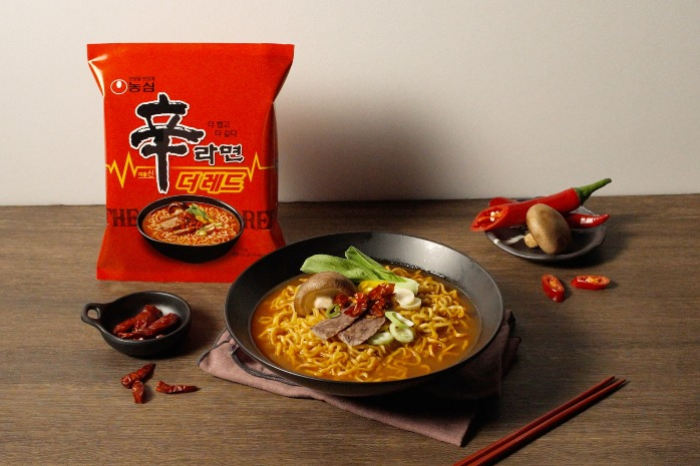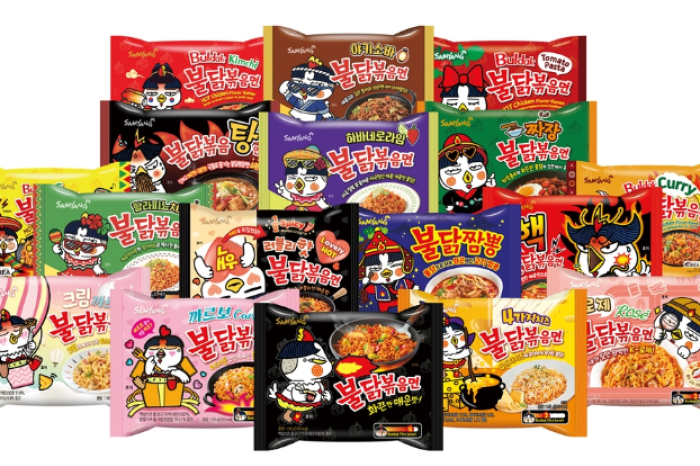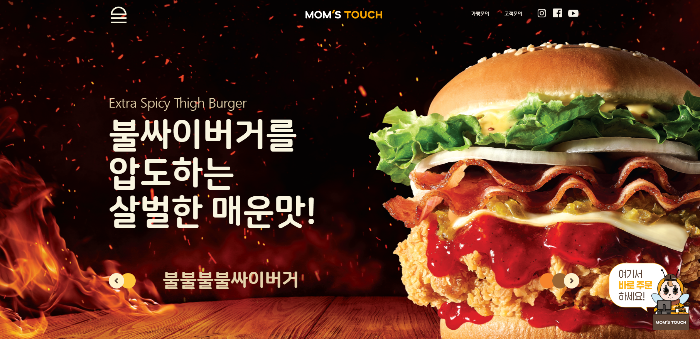Food & Beverage
Spicy food craze sweeps South Korea
The country’s food companies are rushing to roll out extra-spicy foods, from instant noodles to burgers and dumplings
By Nov 10, 2023 (Gmt+09:00)
3
Min read
Most Read
LG Chem to sell water filter business to Glenwood PE for $692 million


Kyobo Life poised to buy Japan’s SBI Group-owned savings bank


KT&G eyes overseas M&A after rejecting activist fund's offer


StockX in merger talks with Naver’s online reseller Kream


Mirae Asset to be named Korea Post’s core real estate fund operator



South Korea, famous for the spicy kick in its cuisine, is going the extra mile to turn the nation red hot with extremely spicy food, believed by Koreans to become more popular during an economic downturn.
But on top of any folklore, the glamorization of spicy eating challenges on social media is also fueling the country’s fever for extra-spicy foods.
In the scorching hot summer this year, Korea’s top instant noodle maker Nongshim Co. introduced Shin Ramyun The Red, which, the company claims, is much spicier than the original Shin Ramyun, starting a heat war in the Korean food market.
The company said the new instant noodle has a pungency of 7,500 Scoville heat units (SHU), more than twice as high as the original Shin Ramyun’s 3,400 SHU.
Despite the extreme heat, Nongshim sold more than 15 million packets of the new instant noodle product in 80 days since its limited release and decided to roll it out as an official product.
Ramyun is an instant noodle, which is also called ramyeon or ramen, in Korea.
Three days after the launch of Shin Ramyun The Red, Samyang Foods Co., Nongshim’s archrival, released its own version of a soupy spicy noodle.

Convenience store operator 7-Eleven Korea joined the fiery food rally 15 days later by launching its private spicy instant noodle brand.
RED HOT BURGERS AND DUMPLINGS
The country’s spicy food war has expanded into other foods.
Korea-native burger chain operator Mom’s Touch & Co. on Wednesday started selling a new burger with an extremely hot sauce with an SHU of 4,941.
The sauce is made with the Carolina Reaper chili pepper, known as the world’s hottest chili pepper, the company said.
Lotte Wellfood Co. on the same day rolled out a new spicy dumpling mixed with a hot sauce with an SHU up to 23,000.
Local fried chicken franchise Goobne’s new hot chicken sold more than 80,000 boxes in three days since its launch earlier this week.

SOCIAL MEDIA CHALLENGE
Given growing popularity of extremely spicy foods in Korea, the number of spicy foods sold by major local convenience store chain GS25 jumped to 142 in 2022 from 117 in 2021.
The number increased to 174 in the January-October period of this year, and their sales in the cited period jumped 20.7% from the same period of last year.
There is a widespread belief in Korea that people seek spicy foods during an economic slump.
But the latest spicy food craze in Asia’s fourth-largest economy is largely owed to global spicy food challenges on social media among young people, according to industry observers.
Videos posted on social media that show heat eaters gagging, coughing, sweating and begging for water after eating fiery foods receive many "likes" or comments, leading such posts to go viral and bringing internet fame to their makers.
Samyang’s hot chicken flavor ramen called Buldak Bokkeum Myeon under the Buldak Ramen brand sold more than 5 billion packets in total across the globe by mid-July partly thanks to popular social media videos showing people’s reaction to it.
“Enjoying new and uncommon things as a game has become a popular trend in food consumption,” said Moon Kyung-sun, a research manager at Euromonitor International.
As spicy foods have long been a unique aspect of Korean food, Korean consumers are quite willing to challenge spicier food, opening the door to a series of new spicy food releases, Park added.
Write to Kyeong-je Han at hankyung@hankyung.com
Sookyung Seo edited this article.
More to Read
-
 Korean foodInstant noodles, rice, kimchi buoy Korean food exports
Korean foodInstant noodles, rice, kimchi buoy Korean food exportsSep 25, 2023 (Gmt+09:00)
2 Min read -
 Food & BeverageS.Korea's Nongshim earns H1 operating profit of $89 million
Food & BeverageS.Korea's Nongshim earns H1 operating profit of $89 millionAug 11, 2023 (Gmt+09:00)
2 Min read -
 Food & BeverageSamyang’s Hot Chicken Flavor Ramen sales exceed 5 bn
Food & BeverageSamyang’s Hot Chicken Flavor Ramen sales exceed 5 bnJul 28, 2023 (Gmt+09:00)
1 Min read -

-
 Korean foodSamyang Foods aims to grow Buldak sauce into $75 mn brand
Korean foodSamyang Foods aims to grow Buldak sauce into $75 mn brandMay 08, 2023 (Gmt+09:00)
2 Min read
Comment 0
LOG IN


